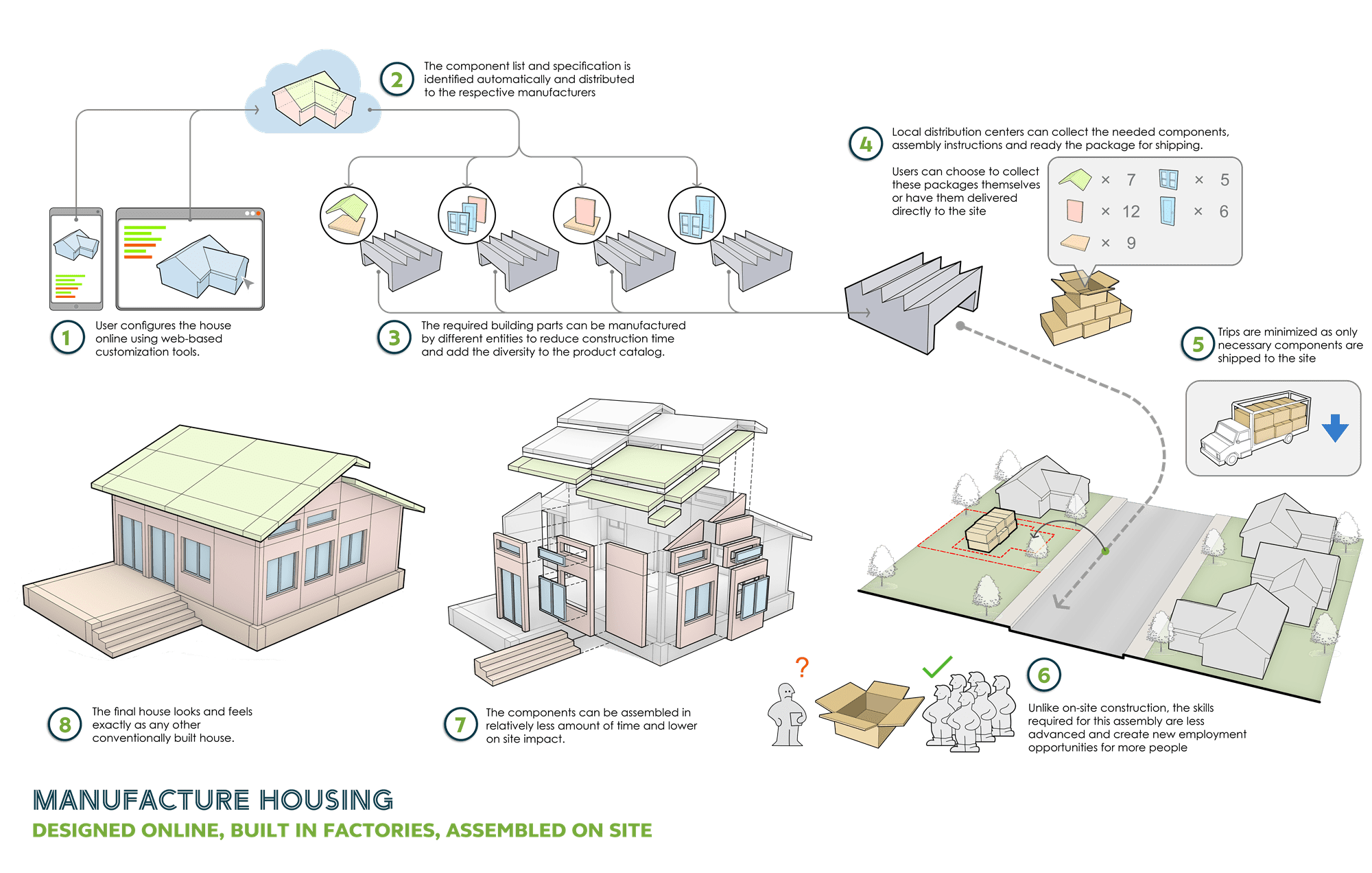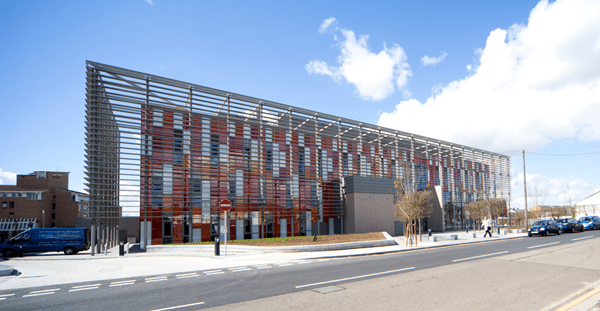By successfully replicating the manufacturing process for the construction industry, we can reduce both the cost of construction and the time taken. There are numerous benefits to modular as an alternative to onsite construction. While the transformation to modular construction is challenging, the benefits significantly outweigh the efforts. Let us look at some of the benefits of choosing modular construction techniques.
1. Greater flexibility
The modularity of the design allows the user to swap out parts of the habitat in the event of wear and tear or if upgrades become available. Individual panels can incorporate mechanical and electrical features, reducing site coordination. While the cumulative effort would not change, frontloading the coordination to assemblies on the factory line significantly minimizes the per-unit effort required to assemble a house, effectively reducing the cost of the unit without compromising the design, functionality, and quality of the materials used.
2. Less pollution and construction waste
Construction activities and generated waste are massive contributors to global carbon emissions, with buildings consuming around 50% of global materials and contributing approximately half of global solid waste. Apart from being an eye sore, neighboring construction activities can be a prolonged and annoying source of pollution. Onsite construction, with its use of heavy machinery, transportation, and storage of materials, can be directly linked to increased carbon emissions in the immediate vicinity and in terms of global climate change. Even a short-term construction project can damage the ecosystem and deplete our dwindling flora and fauna. While onsite construction activities are inevitable, modular construction has the potential to reduce its impact on the environment.
Moving a large number of construction activities to a controlled location can better manage the pollution and waste produced. Optimizing the circulation of material to and from the sites is possible. Time on site can be reduced to include essential construction activities to limit the effects on local ecosystems.

3. Optimized energy
Modular construction also allows us to make the designs more energy-efficient. The models can come preconfigured for a specific climate and accommodate passive and active energy needs. Panels can have higher insulation according to the install orientation, and roof panels can have the option for PV panels if needed. Having these elements considered beforehand makes selecting sustainable options easy.
Only one to two percent of the world’s population has direct access to architectural services, mainly because these services are a luxury only few can afford for an individual dwelling. Even most developers shuffle between two or three design layouts and limit their buyer’s choice of materiality and ability to customize the design. If the construction process became more modular, it would provide users with new opportunities to access quality architectural services without making them too expensive.
4. Automated and cheaper
An alarming issue that faces the construction industry today is the lack of skilled labor. This is an integral factor in increasing costs and deteriorating quality. Moving construction activities under a single roof addresses these issues. A strong team can be assembled to address the various needs of architectural construction.
Further reductions in construction costs can occur by utilizing automation on the manufacturing line. Like any manufacturing plant, machine outsourcing of repetitive tasks should take place, significantly reducing the time taken for production while maintaining a strict budget.




